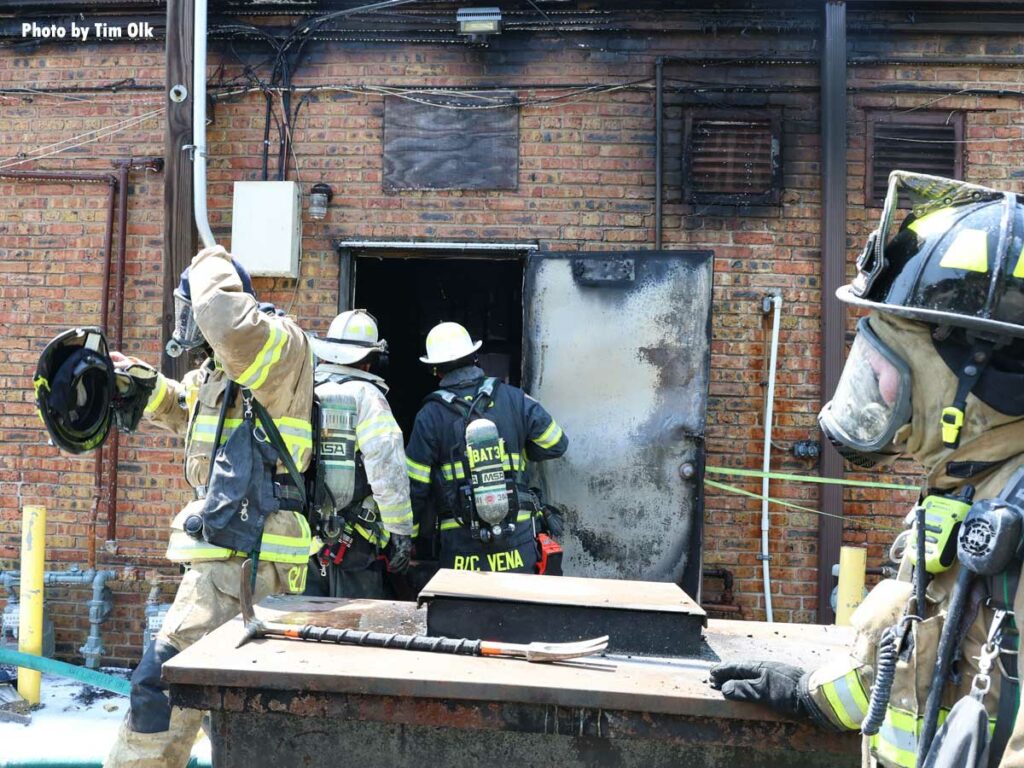Getting firefighters involved in the building code process

The Strategy-5 Codes and Standards is a task force group representing the vast majority of the nation’s fire service interest groups. Working in tandem with the U.S. Fire Administration (USFA) Strategic Initiatives, Strategy-5 seeks to cultivate fire service education, advocacy, and participation in the code development process. This initiative is to bring forth more local fire department involvement in “Taming the Fire Environment.” The boots on the ground fire suppression units are the ones who do battle in buildings every day, yet many of these voices remain silent. These unheard fireground influences need to get more involved in the building/fire code process if we are going to make an impact on firefighter safety.
Book: High-Rise Buildings: Understanding the Vertical Challenges
- Forget Preplanning…Battle-Ready Intelligence
- Rethink Battle-Ready Intelligence
- Jack J. Murphy and Jerry Tracy: Battle-Ready Intelligence
VISION 20/20 FIRE PREVENTION STRATEGIES
Firefighter Safety
The fire service has long recognized that effective code and standard development and administration results in a safer environment for the public. However, codes and standards are designed to prevent and mitigate the same hazards that expose firefighters to illness, injury, and death. When firefighters lose their lives on the fireground, the fire service is quick to key in on how the event unfolded. But if more focus was placed on the “why” of the event—that is, its root causes—facts would often lead to a breakdown in the codes and standards process. It’s time to change all of this, from the fire chief through all ranks.
ICC
The fire service should not rely on the public reaction and a cry for life safety changes from a major incident to cause a significant code adoption. There are 29,705 fire departments in this country—these are far more numerous voices than one just relying n a single voice from their national or state level organizations. For the International Code Council (ICC) code procedure, take the 29,705 fire depts. and multiple (x) by the smallest department who voting base would be four; this equals 118,820 fire conscience opinions, which could enhance our battle spaces along with balancing life safety measures for the building occupants.
Since 2015, the ICC code cycle, an online government consensus vote process has been available, thus enabling local fire department jurisdictions to cast a ballot from their own municipality. (Refer to table below)
| POPULATION SERVED | FIRE DEPT. NUMBER OF VOTES |
| 50,000 OR LESS | 4 |
| 50,001-150,000 | 8 |
| More than 150,000 | 12 |
To enroll your fire department for the upcoming ICC code development cycle, go to:
https://www.iccsafe.org/membership/join-icc/#govt. It is worth the minimal fee to taming our firefighter response environments.
NFPA
In the National Fire Protection Association (NFPA) there are some 397 standards presently in the hopper. Many of these standards have a direct impact on fire department responses, equipment, staffing, and management, along with fire protection systems, buildings systems and industrial processes, fire prevention, and public education. Numerous NFPA benchmarks can have an influence on our fireground safety, yet many technical committees need a fire service voice.
To apply for committee membership as a fire service representative go to: https://www.nfpa.org/Codes-and-Standards/Standards-Development/Technical-Committees
Fire Department Code Participation
The fire service is entrusted with being the life safety “watchdog” for the general public at large. Additionally, as firefighters, we are also the stakeholders when it comes to taming our battlespace, the fireground. Local fire departments and the broader state-level fire groups must participate in the ICC code development process beyond what the public often hears after a fire—namely that “the building” meets the minimum code compliance. What the public needs to hear is what the fire service puts forth during the code hearings to make the building safer, but is negated when the ballots are casted
JACK J. MURPHY, MA, is a fire marshal (Ret.) and a former deputy chief of the Leonia (NJ) Fire Department. He is the past chairman of the Fire/Life Safety Directors Association of Greater New York. He is a principal member on the NFPA High-Rise Building Safety Advisory and the 1660 Emergency, Continuity, and Crisis Management: Preparedness, Response, and Recovery committees and a representative on the ICC Fire Code Action Committee. In 1997, he was appointed an FDNY Honorary Battalion Chief. He is a member of the Clarion Fire and Rescue Group Advisory Board and a presenter at FDIC International. He was the recipient of the 2012 Fire Engineering Tom Brennan Lifetime Achievement Award.

